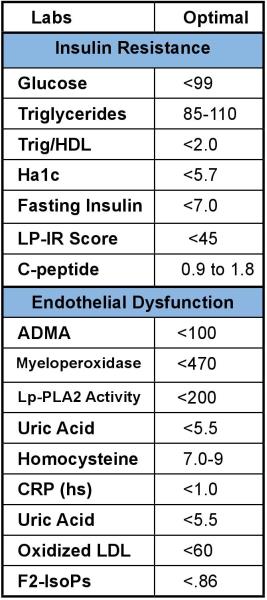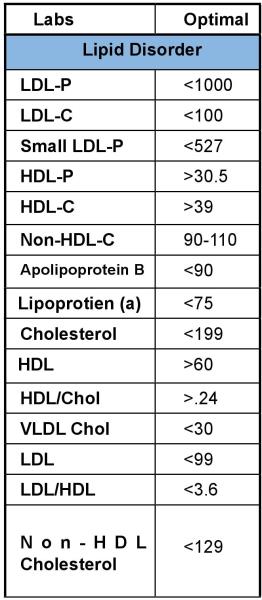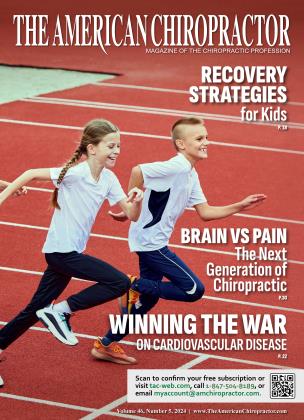to Winning the War on Cardiovascular Disease
May 1 2024 Ronald Grisantito Winning the War on Cardiovascular Disease
May 1 2024 Ronald GrisantiUnderstanding the Three-Legged Stool Concept to Winning the War on Cardiovascular Disease
By Ronald Grisanti, DC, DABCO, DACBN, MS, CFMP
In my clinical experience and pursuit to clearly understand the key mechanisms of progressive cardiovascular disease (CVD), I have come across three schools of thought that I hope to bring to light in today’s article.
I commonly visualize a three-legged stool exemplifying the full understanding of developing atherosclerosis. The three areas of cardiovascular disease include:
Lipid dysregulation (Leg #1)
Endothelial dysfunction and inflammation (Leg #2)
Insulin resistance (Leg #3)
Lipid Dysregulation
The role of abnormal lipid markers (Leg #1) is essential in any phase of the atherosclerotic process and has been well established in peer-reviewed literature to be integral when establishing cardiovascular treatment protocol to reverse the elevated risk of atherosclerosis.
Endothelial Dysfunction
Another school of thought (Leg #2) is the issue of endothelial dysfunction. The endothelium is a thin membrane that lines the inside of the heart and blood vessels. Endothelial cells release substances that control vascular relaxation and contraction, as well as enzymes that control blood clotting, immune function, and platelet (a colorless substance in the blood) adhesion.
Endothelial dysfunction has been shown to be significant in predicting stroke and heart attacks because of the inability of the arteries to dilate fully. The dysfunction may be a result of high blood pressure, diabetes, high cholesterol, and smoking. Studies have shown that endothelial dysfunction precedes the development of atherosclerosis, a chronic disease characterized by abnormal thickening and hardening of the arterial walls with resulting loss of elasticity.
Watch the following video from Cleveland Heart Lab:
Insulin Resistance
Insulin resistance (Leg #3), also known as impaired insulin sensitivity, happens when cells in your muscles, fat, and liver don’t respond as they should to insulin, a hormone your pancreas makes that’s essential for life and regulating blood glucose (sugar) levels.
The differing camps of thought in the world of cardiovascular progression are all simultaneously correct and wrong. The battle among different camps about what causes atherosclerosis should not be isolated to one or two legs of the stool.
Some thought leaders claim focus needs to be exclusively directed to insulin resistance, while others claim it is all about arterial inflammation/endothelial dysfunction. Of course, the traditional cardiovascular medical community with their myopic position are ordering only the basic lipid panel (total cholesterol, LDL cholesterol, triglycerides, and HDL).
I have reviewed hundreds and even thousands of medical records, and it is rare to ever see more than the basic lipid panel ordered to establish a cardiovascular risk level. Based on this limited cardiovascular assessment, the treatment of choice is almost always statins. This article is in no way denying the benefits of addressing lipid dysregulation via diet, lifestyle interventions, and, in many cases, the use of statins.
That camp of health professionals assumes all levels of atherosclerosis are directly associated with lipid dysregulation. My point is quite clear: atherosclerosis is a multifactorial process regulated by a complex interplay among all three legs of the stool discussed earlier.
To obtain the best clinical outcome in stopping and even reversing atherosclerosis, it is imperative to carefully evaluate and treat all three legs of the stool.


Innovative and advanced testing, as shown above with the three legs of the cardiovascular stool analogy, is necessary for providing the absolute best opportunity to aggressively and effectively manage atherosclerosis. Anything less than the labs mentioned above for all three legs of the stool is bad medicine that is bound to result in poor or even deadly clinical outcomes.
I have to wonder why the most prestigious and most well-respected medical institutions, such as Boston Heart Diagnostics and Cleveland Heart Lab, do exactly what I have discussed in this important article. As you will clearly see, these outstanding forward-thinking medical establishments have it right and realize that to be a leader in cardiovascular management and excel in reversing CVD, then you should do nothing short of addressing all three legs of the stool.
https://bostonheartdiagnostics.com/
https://www.clevelandheartlab.com/test-menu/
Dr. Grisanti’s Comments:
The goal is quite simple: evaluate cardiovascular disease (CVD) risk beyond the standard lipid assessment with the addition of advanced diagnostic markers. Once one has identified the weight of the cardiovascular markers, then treatment becomes quite obvious.
From my personal experience, I have many patients with only one leg of the stool, resulting in compromised CVD. On the other hand, I have many patients with all three of the legs of the stool in peril. The preponderance of evidence to support carefully testing for all of the legs of the stool is simply overwhelming, and again, makes for outstanding medical care and the best clinical outcomes.
The ultimate goal for all healthcare professionals seeking to stop and reverse atherosclerosis is to first test for all of the cardiovascular metrics shown. Then, with time-tested dietary excellence (Mediterranean plant-based diet), lifestyle modifications, personalized approved exercise programs (zone two cardio), stress reduction management, nutraceuticals, and even pharmaceuticals, you can commonly witness the miracle of atherosclerosis reversal.
With a cardiovascular disease management plan and optimizing all of the previously recommended labs, you will be in a position of ultimate cardiovascular success and save a lot of lives!
References
Uric Acid and Endothelial Dysfunction
https://www.ncbi.nlm.nih.gov/pmc/articles/PMC5237466/
https://www.sciencedirect.com/science/article/pii/S0021915018314266
Insulin Resistance and Atherosclerosis
https://www.ncbi.nlm.nih.gov/pmc/articles/PMC10069006/
https://cardiab.biomedcentral.com/articles/10.1186/s12933-018-0762-4
https://pubmed.ncbi.nlm.nih.gov/10418856/
https://www.ncbi.nlm.nih.gov/pmc/articles/PMC3594115/
https://academic.oup.com/edrv/article/40/6/1447/5482541
Lipid Dysregulation and Atherosclerosis
https://pubmed.ncbi.nlm.nih.gov/36613514/
https://www.ncbi.nlm.nih.gov/books/NBK343489/
https://www.ncbi.nlm.nih.gov/books/NBK343489/
https://www.frontiersin.org/articles/10.3389/fcvm.2021.707529/full
C-Reactive Protein (high sensitivity) and Endothelial Dysfunction
https://www.ahajournals.org/doi/10.1161/01.cir.0000159336.31613.31
https://www.internationaljournalofcardiology.com/article/S0167-5273(11)00771-6/abstract
Homocysteine and Endothelial Dysfunction
https://pubmed.ncbi.nlm.nih.gov/26201664/
https://www.frontiersin.org/articles/10.3389/fcell.2021.672335/full
Apolipoprotein B and Atherosclerosis
https://www.ncbi.nlm.nih.gov/pmc/articles/PMC7369156/
https://www.ncbi.nlm.nih.gov/pmc/articles/PMC8540246/
Lipoprotein(a) and Atherosclerosis
https://www.atherosclerosis-journal.com/article/S0021-9150(22)00181-2/fulltext
https://heart.bmj.com/content/109/1/18
Lp-PLA2 and Endothelial Dysfunction
https://www.ncbi.nlm.nih.gov/pmc/articles/PMC6360470/
https://lipidworld.biomedcentral.com/articles/10.1186/1476-511X-10-170
Myeloperoxidase (MPO) and Endothelial Dysfunction
https://www.ncbi.nlm.nih.gov/pmc/articles/PMC9112398/
https://pubmed.ncbi.nlm.nih.gov/31043077/
ADMA and Endothelial Dysfunction
https://www.ncbi.nlm.nih.gov/pmc/articles/PMC7563400/
https://www.nature.com/articles/s41598-019-50778-w
LDL-C and Atherosclerosis
https://www.ahajournals.org/doi/10.1161/CIRCULATIONAHA.122.061010
https://academic.oup.com/eurheartj/article/41/24/2313/5735221
sdLDL-C and Atherosclerosis
https://www.frontiersin.org/articles/10.3389/fcvm.2021.804214/full
https://www.mdpi.com/1648-9144/58/2/299
Microalbumin and Endothelial Dysfunction
https://pubmed.ncbi.nlm.nih.gov/12389063/
https://pubmed.ncbi.nlm.nih.gov/11916939/
Ox-LDL and Endothelial Dysfunction
https://www.ncbi.nlm.nih.gov/pmc/articles/PMC9199460/
https://pubmed.ncbi.nlm.nih.gov/30806246/
F2-IsoPs and Endothelial Dysfunction
https://www.functionalmedicineuniversity.com/F2-IsoPs.pdf
Endothelial Dysfunction
https://www.ncbi.nlm.nih.gov/pmc/articles/PMC4723236/
Mediterranean Plant-Based Diet
https://pubmed.ncbi.nlm.nih.gov/37513660/
https://www.ncbi.nlm.nih.gov/pmc/articles/PMC9566634/
https://www.ncbi.nlm.nih.gov/pmc/articles/PMC9566634/
https://www.ahajournals.org/doi/10.1161/STROKEAHA.120.033214
https://pubmed.ncbi.nlm.nih.gov/37583985/
 View Full Issue
View Full Issue









